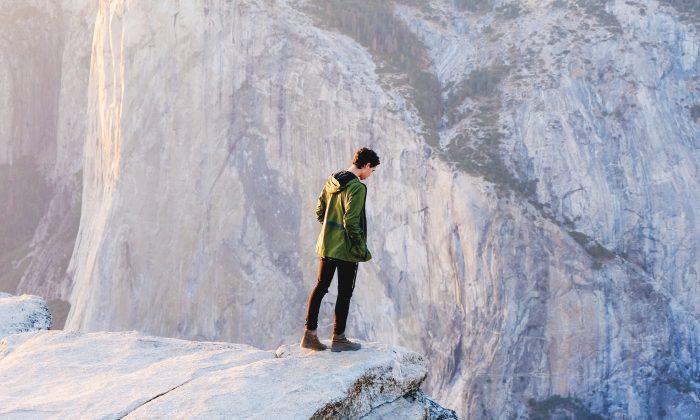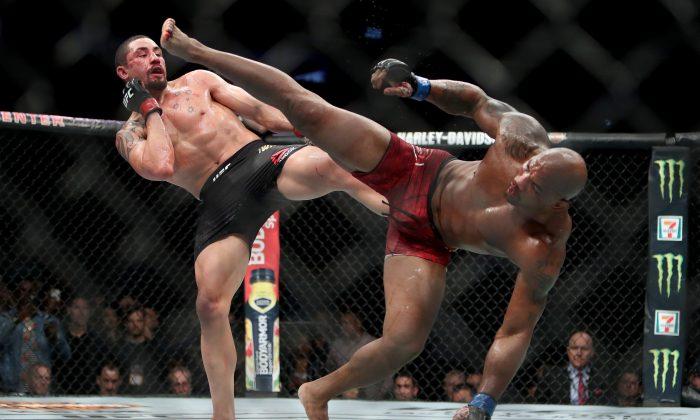Australia’s sports integrity watchdogs are being streamlined into a single agency to better fight doping, match-fixing and organized crime, the federal government said on Feb. 12.
The new agency, to be called ‘Sport Integrity Australia’ merges the Australian Sports Anti-Doping Authority (ASADA), the National Integrity of Sport Unit and the integrity functions of funding body Sport Australia.
A new ‘National Sports Tribunal’ will also be set up and trialled for two years to hear anti-doping violations and other sports disputes.
It will have “the power to call evidence to establish facts and ensure natural justice,” the sports and home affairs ministries said in a media release.
Sports minister Bridget McKenzie cited the ball-tampering scandal that engulfed the Australian men’s cricket team in South Africa last year to underline the importance of anti-corruption efforts in the country.
“We have seen the massive fall-out from the cricket ball-tampering scandal and the loss of belief in our national cricket team and we are determined to prevent incidents like this from happening,” McKenzie said.

“Australian sports lovers deserve to know that the sport they watch and the teams they support are competing on a level playing field and playing fairly.
“When Australians – and especially our kids – see examples of sports being corrupted, it means they become disillusioned and less likely to get involved.”
The measures are in response to the independent Wood review, which was commissioned in 2017 to survey Australia’s sports integrity arrangements.
The report of the review issued last year found Australia was increasingly vulnerable to serious integrity breaches and the intervention of organized crime in sports.

The government had accepted “the overwhelming majority” of the review’s 52 recommendations across match-fixing, anti–doping, disputes arbitration, and “co-ordinating Australia’s national and international response to sports integrity matters”, McKenzie said.
Among the recommendations taken, the government had signed up to the Macolin Convention, the Council of Europe’s multilateral treaty against match-fixing.
The Rule of the Edge
In all of my many challenges, habit changes, book writing, and learning, I’ve found one thing to be the most powerfully beneficial to all growth.I call it the “Rule of the Edge.”
Here’s the rule: practice at your edge most of the time.

Go to the edge of discomfort, just to the edge of what is difficult for you, to where you are pushing your boundaries a bit.
If you’re practicing music, and you only practice the scales, after awhile doing the scales is too easy. Sure, it’s still good practice, but you will have to push to something that’s more challenging to keep progressing.
If you exercise, easy exercise is a good thing, but you also need to push yourself. Just a bit.
Your edge isn’t pushing yourself until you’re ready to collapse. It’s not pushing to injury, or to where you can’t practice tomorrow. It’s not studying until your brain melts.
Go to the edge, but don’t dive off.
And when I say, “Practice at your edge most of the time,” notice the phrase “most of the time.” You shouldn’t be at your edge all the time. It’s exhausting, and can take a lot of focus. Instead, try to be there more than half the time. Don’t be lazy, but also give yourself some easy practice.
There’s a lot of value in easy practice—it cements your learning, and keeps you sharp and in shape. It locks in the easy stuff and can be a lot of fun.
You can also experiment with pushing a little past your edge, if you have the experience to know that it’s safe. It might be best to do this under supervision of a teacher or trainer if you’re unsure.
What Edge Training Looks Like in Practice
Here’s how this kind of edge practice might work in real life:- If you’re practicing yoga, you might do an hour-long practice where about 60 percent of the poses (roughly) are challenging for you (but not so challenging that you’ll be injured or exhausted), and the rest are easy ones that allow you to focus on your breath and recover from the edge poses.
- If you’re running, you’ll mix up your running days—four days will be challenging but not crazy, and some with easy ones thrown in between. And a rest day or two, of course.
- If you’re learning chess or go, you’ll do problems or drills that are hard for you, and also a bunch of easy ones. The easy one cement the patterns. The edge ones teach you new patterns.
- If you’re creating a habit, like learning to meditate, start with just short meditations of 2-5 minutes. Eventually, you’ll want to do longer meditations of 10 minutes, 20 minutes, or even more. Find the spot that’s your edge. Mixing in some shorter, easier sessions will help you stay sharp at your edge.
- If you want to train yourself to get comfortable with discomfort and uncertainty, you find a way to make yourself uncomfortable each day, and practice mindfulness in the middle of that discomfort. For example, taking a cold shower might be your edge. But another day, you might just go outside when it’s a little chilly, with only a T-shirt on, for 20 minutes. You might practice at the edge of your discomfort with exercise, speaking on a stage, meditating for longer, etc.
The Way to Practice at Your Edge
When you’re at your edge, it’s one thing to just tolerate it, to grit your teeth and bear it until it’s over ... and quite another thing to actually practice with the discomfort and uncertainty of being at that edge.- Go up to the edge and stay there for a little longer than you’d like. You want to collapse, you want to exit. Instead, hold the pose for a little longer. See it as your growth in action.
- Now drop mindfully into the discomfort & uncertainty. Drop into your body, noticing the sensations of the discomfort. Standing on stage in front of hundreds of people? Notice the sensations of anxiety or nervousness, or excitement, whatever you’d call it. Running a hard mile? Notice the sensations in your legs and torso.
- Practice opening in that uncertainty and discomfort. See what you can do to relax into this feeling of being at your edge. Can you bring a sense of curiosity? Explore the bodily feeling for a bit, noticing what it’s like. Relax your muscles around these sensations. Bring a sense of gentleness, compassion, or humor to it. Open your mind to all sensations and your surroundings in the present moment. Open up to a vast skylike mind.






Friends Read Free